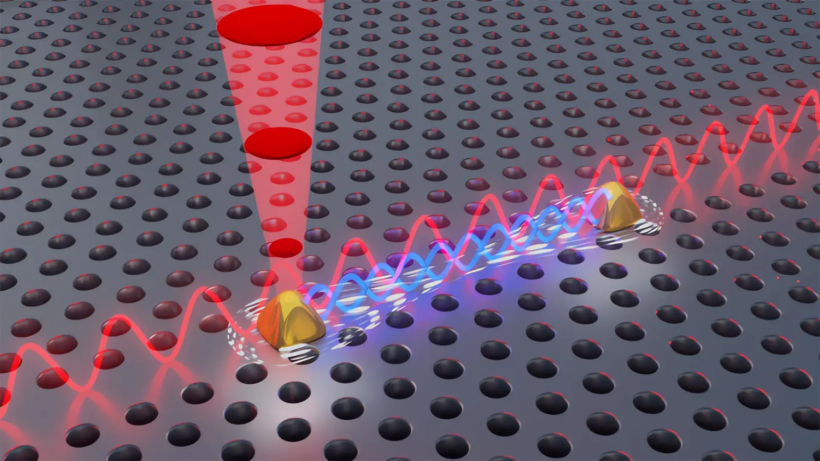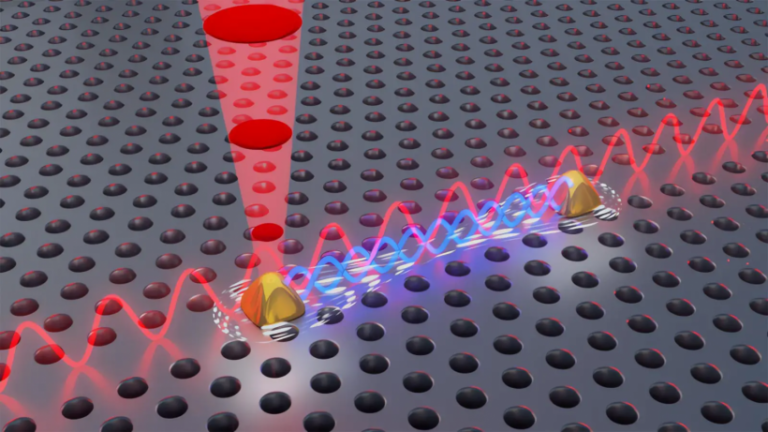Physicists achieve breakthrough in fundamental physics: simultaneous control of two quantum light sources after decades of obstacles.
After years of intense effort, the University of Copenhagen, in collaboration with Ruhr University Bochum, has achieved a significant milestone in quantum research that has been a major challenge. They can now control two quantum light sources instead of just one, which allows them to generate quantum mechanical entanglement, a crucial phenomenon in quantum physics.
While this achievement may not seem like a significant development to those unfamiliar with quantum mechanics, it has enormous implications for businesses and other entities looking to capitalize on this technology. Going from one to two may appear trivial in most fields, but in the world of quantum physics, it is a critical breakthrough.
Scientists worldwide have been working tirelessly for many years to create stable quantum light sources and achieve quantum mechanical entanglement, a phenomenon that has almost science fiction-like qualities, where two light sources can instantaneously affect each other, even across vast distances. Entanglement is the foundation for quantum networks and a key component in developing an effective quantum computer.
Controlling Two Quantum Light Sources
Recently, researchers at the Niels Bohr Institute accomplished a significant breakthrough, which they published in the prestigious journal Science. Professor Peter Lodahl, one of the researchers involved in the study, believes that this accomplishment is a significant step toward advancing quantum technology to the next level and eventually “quantizing” the internet, computers, and encryption that are currently used by society.
Peter Lodahl, who has been researching this field since 2001, explains that despite its apparent insignificance, controlling two quantum light sources and linking them to each other is a significant accomplishment. This achievement builds on the last two decades of work and reveals the key to scaling up the technology, which is crucial for creating groundbreaking quantum hardware applications. To achieve this breakthrough, the researchers employed a nanochip, which they developed over the last few years and is only slightly larger than the width of a human hair.
Lodahl’s team is concentrating on a specific type of quantum technology that employs photons, or light particles, as microcarriers to transfer quantum information. Although they are a leading group in this area of quantum physics, the team was only capable of controlling one light source at a time because light sources are highly sensitive to external noise, making replication incredibly challenging. However, the research team has now generated two indistinguishable quantum light sources instead of just one, thanks to their recent breakthrough.

Illustration of two a chip comprising two entangled quantum light sources.
An Entanglement that Leads to Immediate Impact
The lead author of the article, postdoctoral researcher Alexey Tiranov, explains that entanglement enables one light source to have an immediate impact on another, resulting in the creation of an entire network of entangled quantum light sources. These sources can interact with each other, allowing for more powerful quantum bit operations than traditional computer bits. Quantum bits have enhanced processing power because they can represent both 1 and 0 simultaneously, a feat that is impossible with current computer technology. Professor Lodahl adds that even a single quantum light source emitting only 100 photons contains more information than the world’s most significant supercomputer can process.
The ultimate goal of quantum technology is to create a universal error-corrected quantum computer, which can potentially be built using 20-30 entangled quantum light sources. This objective has attracted significant investments from large IT companies. According to Lodahl, the most significant challenge has been progressing from controlling one to two quantum light sources, requiring the development of ultra-quiet nanochips and precise control over each light source. With this new research development, the groundwork for basic research in quantum physics is now in place, paving the way for other entities to apply the research and use it in various technologies such as computers, the internet, and encryption.
Professor Lodahl notes that it is cost-prohibitive for a university to construct a system that controls 15-20 quantum light sources. Therefore, the focus will be on further scaling up, which is mainly a technological challenge, as reported by SciTech Daily.
Do not forget to share your opinion with us to provide you with the best posts !




It’s going to be finish of mine day, however before ending I am reading this impressive
article to increase my knowledge.